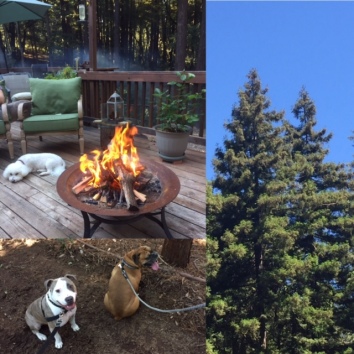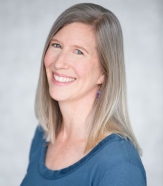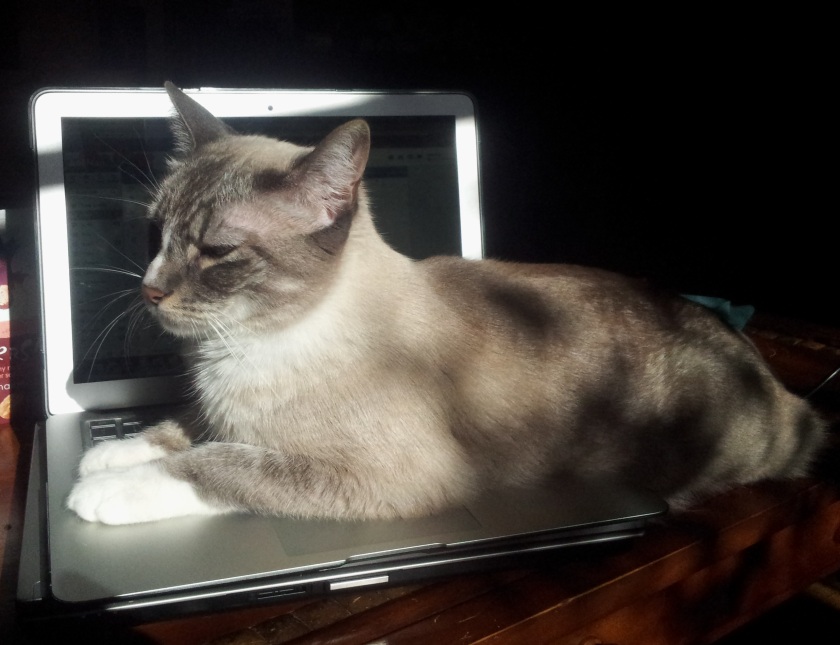 Depending on your circumstances, day to day life can sometimes be difficult and stressful. And there are times when current events make it feel even harder. The constant bombardment of images and words can eat into our souls and wear us down. I know I’ve personally struggled to make sense of the world in recent weeks, not for the first time, and it takes its toll. Such times are when we must be especially committed to self-care, and intentional about taking a break from the constant stream of information to find respite. This is how we build resilience. And yet, if your work or life entails spending a great deal of time around trauma, or if you live in a state of chronic overwhelm and dissatisfaction, then engaging in nourishing self-care is something you will benefit from paying attention to on a regular basis. Trust me; I learned this lesson the hard way!
Depending on your circumstances, day to day life can sometimes be difficult and stressful. And there are times when current events make it feel even harder. The constant bombardment of images and words can eat into our souls and wear us down. I know I’ve personally struggled to make sense of the world in recent weeks, not for the first time, and it takes its toll. Such times are when we must be especially committed to self-care, and intentional about taking a break from the constant stream of information to find respite. This is how we build resilience. And yet, if your work or life entails spending a great deal of time around trauma, or if you live in a state of chronic overwhelm and dissatisfaction, then engaging in nourishing self-care is something you will benefit from paying attention to on a regular basis. Trust me; I learned this lesson the hard way!
When I was commuting 2-3 hours a day round-trip for a corporate job, it was hard to figure out how to best use my time away from work (when I wasn’t checking email for work). My work could often be draining, and I was not ideally suited for the corporate environment. So I didn’t have a lot of energy most of the time. I wanted to eat well, and I love to cook, but I found myself relying on a lot of prepared foods (thank you neighborhood Trader Joe’s!). I wanted to exercise and get enough rest, but most of the time I felt like I had to choose between one or the other. I knew that if all I did was sit on the couch in front of the TV with a glass or two of wine, I would have less energy in the morning, and yet, that was what sounded both possible and most appealing at the time!
Sound familiar?
For many of us, life is stressful. Sometimes ridiculously so. And what’s often the first thing to fall off the To-Do list? Particularly for women, it’s usually the very thing you need to help keep your head above water. Self-care. You must place the oxygen mask on yourself first for a reason, ladies! It’s critical that we engage in restorative practices in order to continue being there for both ourselves and others. Some are so basic, and yet….we think we can do without them. Not so. Everyone knows that optimal health requires us to eat well and get plenty of exercise. We hear this all the time. But there’s more to it than that.
Here are five more important ways you can maintain your ‘get-up-and-go’ on an ongoing basis. Just don’t forget to fit in a little vacation now and then as well.
#1 Let’s start with the good news. You should be taking more breaks from your work. Yay!! You can get more done if you work less. For reals, people! Here’s the data.
From an article in The Atlantic, September, 2014:
“DeskTime, a productivity app that tracks employees’ computer use, peeked into its data to study the behavior of its most productive workers. The highest-performing 10 percent tended to work for 52 consecutive minutes followed by a 17-minute break. Those 17 minutes were often spent away from the computer, said Julia Gifford at The Muse, by talking a walk, doing exercises, or talking to coworkers.”
From a June, 2012 NYT article:
“When it comes to productivity and concentration, everyone has a different capacity. Management should encourage employees to devise individually effective break routines, Dr. Levine says. But he also has some general guidelines: try working in intense 15-minute bursts, punctuated by breaks, in cycles that are repeated throughout the day. This works because “the thought process is not designed to be continuous,” he says.”
And just in case you need more evidence to convince your boss, here’s a Huff Post article from November, 2015, citing 5 Science Backed Ways Taking a Break Boosts Our Productivity:
“We prize this idea of being busy, and see taking a break or getting distracted as a problem.
In reality, rest and relaxation are tools our bodies and minds are trying desperately to get us to use.
Most of us are aware that taking breaks from physical activity is necessary to recuperate and prevent injuries. Taking breaks in our mental work is equally helpful, and can be a great boost to our productivity as well.”
So give it a try. Practice it for a day. Then two days. Practice for two weeks. See what happens!
#2 Feeling tired? The most important thing for your well-being, and IMHO the most disregarded, especially for working parents and those in corporate or start-up environments, is sleep. It’s far too often the first to go. Because we think it will give us more time. Well, sure, it does…but how effective will you be during that time if you’re sleep deprived? Far less effective than you feel, actually. And given item number one on this list, you can afford to re-prioritize sleep more often, I promise. Plus, getting enough sleep will give you more energy to move and get some exercise. Which will help you sleep better. Ta da! It’s a virtual virtuous cycle.
According to the National Institutes of Health:
“Sleep plays a vital role in good health and well-being throughout your life. Getting enough quality sleep at the right times can help protect your mental health, physical health, quality of life, and safety.
The way you feel while you’re awake depends in part on what happens while you’re sleeping. During sleep, your body is working to support healthy brain function and maintain your physical health.”
“After several nights of losing sleep—even a loss of just 1–2 hours per night—your ability to function suffers as if you haven’t slept at all for a day or two.”
“studies show that sleep deficiency harms your driving ability as much as, or more than, being drunk.”
And just how much is enough? What constitutes deficiency?
“Adults need 7-8 hours of sleep a night. If you’re consistently getting less than that, you may need to consider the impact this could be having on your health, productivity, and overall functioning. Perhaps it’s time to shift some priorities around.”
How much actual sleep are you getting? What’s delaying it? What’s interrupting it? Can you make one change that might help you get more sleep even three nights a week? I invite you to make the effort. It can make a world of difference over time.
#3 Sitting is Lethal! Not immediately, obvs. But the more you sit for long periods of time, the worse it is for your health – even if you exercise strenuously every day! Find that hard to wrap your head around? Sadly, it’s true. But you can counter that fairly easily. Read on.
From NYT Magazine, April, 2014, Is Sitting a Lethal Activity? (didn’t I just say it was? 🙂
“This is your body on chairs: Electrical activity in the muscles drops — “the muscles go as silent as those of a dead horse,” Hamilton says — leading to a cascade of harmful metabolic effects. Your calorie-burning rate immediately plunges to about one per minute, a third of what it would be if you got up and walked. Insulin effectiveness drops within a single day, and the risk of developing Type 2 diabetes rises. So does the risk of being obese.”
And here’s the good news. Phew!
“The good news is that inactivity’s peril can be countered. Working late one night at 3 a.m., Dr. Levine coined a name for the concept of reaping major benefits through thousands of minor movements each day: NEAT, which stands for Non-Exercise Activity Thermogenesis. In the world of NEAT, even the littlest stuff matters. McCrady-Spitzer showed me a chart that tracked my calorie-burning rate with zigzagging lines, like those of a seismograph. “What’s that?” I asked, pointing to one of the spikes, which indicated that the rate had shot up. “That’s when you bent over to tie your shoes,” she said. “It took your body more energy than just sitting still.”
It doesn’t take much to break up the still-sitting, muscle-sleeping, zombie-like position at your desk. Better yet, rig up a standing work station or get yourself a set of pedals for under your desk. Hint: they only help if you use them. (I didn’t after the first week, oops)

#4 Why don’t you just go take a hike?! It’s an excellent question. Because getting out in nature is good for pretty much everything. And so is exercise. But back to nature…
According to UC Berkeley’s Greater Good Science Center, How Nature Can Make You Kinder, Happier, and More Creative:
“Scientists are beginning to find evidence that being in nature has a profound impact on our brains and our behavior, helping us to reduce anxiety, brooding, and stress, and increase our attention capacity, creativity, and our ability to connect with other people.”
Now, you may only be able to get out for an actual hike on the weekends, but I’ll bet you can access pockets of nature in your immediate surroundings if you seek them out. So take a moment on one of those breaks from work to soak in the smell of a tree and the beauty of leaves rustling in the wind. It’s healing, and it’s free. Doesn’t get much better than that.
#5 Everyone needs to feel a sense of belonging and community to support their well-being. This blog is focused on connection. See some of my other posts to learn how to cultivate connection in a variety of ways – making new friends, reaching out to others who are different from you to broaden your horizons and appreciate our common humanity. Here’s why this matters for your health.
From a current Stanford University, Be Well @ Stanford article:
“Studies indicate that “social capital” is one of the biggest predictors for health, happiness, and longevity. The problem: we often do not recognize the importance of social connection. Our culture values hard work, success, and wealth, so it’s no surprise some of us do not set aside enough time for social ties when we think security lies in material things rather than other people.”
Although this is a key to wellness that we know factors into longevity, we may not often think to attend to it actively. It takes effort, especially if you’re somewhat introverted. But the ROI makes it well worth it. This may be one of the most enriching things you can do for yourself. And you’ll have the focus and energy to do it if you take care of some of your other basic needs as well.
It’s a shame when we allow insufficient self-care to get in the way of finding more enjoyment in life. I know, because I’ve been there! It’s helpful to recognize that strengthening your capacity for self-care usually involves making changes to other behaviors – learning to prioritize and communicate more effectively for better results, finding ways to connect to both ourselves and others more deeply, identifying and dismantling the obstacles that have been keeping us from forward progress.
These things are absolutely doable. They are within reach. And you deserve the time and attention it takes to ensure your personal well-being. No one else is going to do it for you (though you can receive support and guidance). Start making your cognitive, emotional, and physical health a priority so you can go on enjoying all the sweetness life has to offer for decades to come. I promise you, it will be worth it.








 As you may have noticed (or not) I took a couple of weeks off from writing blog posts. Life simply got busy and I had to re-prioritize. I noted to myself that blogging was something I “wanted” to do, and not a “must” do, since it’s not contributing to my income in any way, and isn’t a critical pathway to peace of mind for me. So I didn’t let it become a “should,” either. I did, however, get away for a gorgeous weekend of car camping with my wife and dog, which definitely met those ‘peace of mind’ needs.
As you may have noticed (or not) I took a couple of weeks off from writing blog posts. Life simply got busy and I had to re-prioritize. I noted to myself that blogging was something I “wanted” to do, and not a “must” do, since it’s not contributing to my income in any way, and isn’t a critical pathway to peace of mind for me. So I didn’t let it become a “should,” either. I did, however, get away for a gorgeous weekend of car camping with my wife and dog, which definitely met those ‘peace of mind’ needs.
 Depending on your circumstances, day to day life can sometimes be difficult and stressful. And there are times when current events make it feel even harder. The constant bombardment of images and words can eat into our souls and wear us down. I know I’ve personally struggled to make sense of the world in recent weeks, not for the first time, and it takes its toll. Such times are when we must be especially committed to self-care, and intentional about taking a break from the constant stream of information to find respite. This is how we build resilience. And yet, if your work or life entails spending a great deal of time around trauma, or if you live in a state of chronic overwhelm and dissatisfaction, then engaging in nourishing self-care is something you will benefit from paying attention to on a regular basis. Trust me; I learned this lesson the hard way!
Depending on your circumstances, day to day life can sometimes be difficult and stressful. And there are times when current events make it feel even harder. The constant bombardment of images and words can eat into our souls and wear us down. I know I’ve personally struggled to make sense of the world in recent weeks, not for the first time, and it takes its toll. Such times are when we must be especially committed to self-care, and intentional about taking a break from the constant stream of information to find respite. This is how we build resilience. And yet, if your work or life entails spending a great deal of time around trauma, or if you live in a state of chronic overwhelm and dissatisfaction, then engaging in nourishing self-care is something you will benefit from paying attention to on a regular basis. Trust me; I learned this lesson the hard way!
